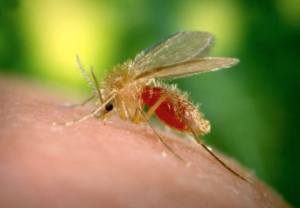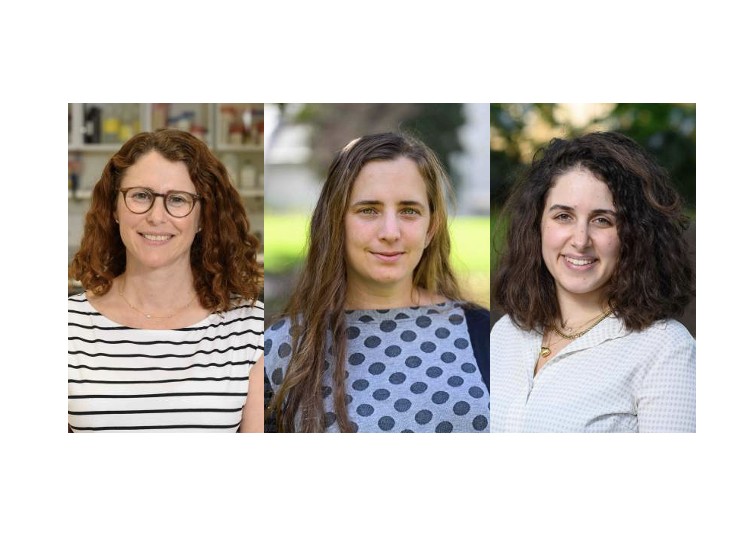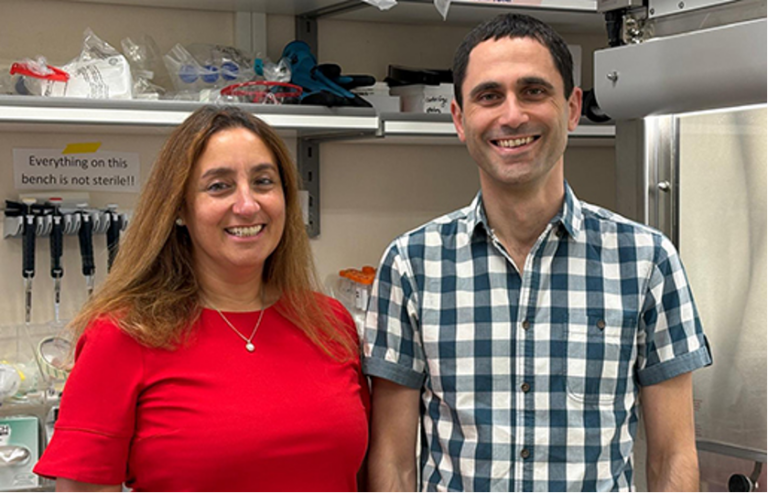L'Université Bar-Ilan (Israël) espère commercialiser bientôt un nanotraitement qui mène le parasite de la leishmaniose à s'autodétruire

[:fr]
Le Pr Shulamit Michaeli, vice-présidente de la recherche à l’Université Bar-Ilan en Israël, espère démarrer bientôt la commercialisation d’un nanomédicament pour détecter et traiter la leishmaniose et d’autres maladies causées par des trypanosomes (tous transmis par des morsures de mouches), comme la maladie du sommeil et la maladie de Chagas.
En combinant un polymère et un ingrédient pharmaceutique liés par des nanoparticules d’oxyde de fer spécialement fabriquées, le médicament ne prend que 20 minutes pour effectuer la culture en laboratoire. « Le médicament nano élimine près de 95% du parasite sans endommager les macrophages. Il est important de noter qu’aucun signe de toxicité n’a été observé chez les souris injectées, ce qui suggère que notre préparation est non toxique. Il n’y a eu aucun changement dans la numération sanguine ou les enzymes hépatiques ».
Jean-Paul Lellouche, franco-israélien, unscientifique de haut niveau à Bar-Ilan

Le Pr Shulamit Michaeli et le Prof. Jean-Paul (Moshe) Lellouche, diplômé de l’Université de La Doua, PhD 1981 (Lyon), au sein de BINA (Bar-Ilan University, Dpt of Chemistry & Institute of Nanotechnology & Advanced Materials) ont développé ce composé breveté qui tue les deux types de parasites Leishmania que l’on trouve en Israël, et le parasite qui provoque la leishmaniose viscérale. Le franco-israélien Jean-Paul Lellouche est auteur de 158 articles scientifiques (2611 citations), il a déposé 15 brevets et a rédigé 4 chapitres de livres. Il est co-inventeur de nanogouttes (janvier 2019 – projet NANODROP) de thérapie oculaire chez l’homme. Il dirige à présent sa propre équipe de chercheurs au sein de BINA. Il avait rejoint l’Université Bar-Ilan en octobre 2000.
Pommade contre la leishmaniose cutanée

« Nous négocions avec une société pharmaceutique israélienne pour prendre en charge la synthèse de médicaments qui sera utilisée pour tester des humains infectés<; Des dermatologues de deux des principaux centres médicaux israéliens traitant actuellement des patients atteints de leishmaniose sont impatients d’essayer le médicament. Bien qu’il existe d’autres médicaments efficaces contre la leishmaniose, certains d’entre eux ne sont pas disponibles sous forme de pommades ou sont très coûteux. Le nôtre n’est pas cher et la fabrication est très simple », a ajouté le Pr Michaeli.
Esther Amar pour Israël Science Info
———————-
Université Bar-Ilan (Israël) : sur la voie d’un traitement pour mener le parasite de la leishmaniose à s’autodétruire
Le gouvernement israélien a décidé d’investir 10 millions de shekels pour lutter contre la propagation de la leishmaniose, une grave maladie de peau. Le Pr Shulamit Michaeli, ainsi que les Dr Yaniv Lustig, le Dr Hanoch Goldschmidt, le doctorant Ronen Hope et le Dr Jean-Paul Lellouche, de l’université de Bar Ilan, sont à la pointe de la recherche dans ce domaine. Ces dix dernières années, plus de 1650 Israéliens ont été diagnostiqués avec la maladie. L’infection se présente sous forme de plaies rouges (d’où son surnom) sur la peau qui éclatent quelques semaines à quelques mois après que la personne ait été mordue par un phlébotome (petit diptère). L’infection peut également endommager le foie et la rate et provoquer une anémie. Les plaies peuvent provoquer des cicatrices permanentes.
Le Pr Michaeli étudie les fonctions fondamentales du parasite en vue de trouver un dispositif qui va provoquer son autodestruction. Ses travaux sur un « cousin » du parasite de la leishmaniose, appelé Trypanosoma brucei, qui provoque la maladie du sommeil africaine, lui ont permis de trouver une protéine qui signale au parasite de s’autodétruire sans nuire aux cellules saines environnantes. Grâce aux nombreuses similitudes entre les deux parasites, le chercheur espère découvrir des traitements pour les deux maladies.
En Israël, on est passé d’une prévalence de l’ordre de 0,4 cas pour 100 000 habitants en 2001, à 4,4 cas pour 100 000 habitants en 2012. Et la maladie apparait désormais dans des zones où sa présence était faible jusque là. Le ministère de l’Environnement a indiqué que les mesures d’éradication ne pouvaient être appliquées depuis que les autorités se sont engagées à n’éradiquer que les moustiques. En attendant, la seule façon de se protéger contre le phlébotome est par le port de vêtements à manches longues après le coucher du soleil et d’utiliser un produit répulsif.
Esther Amar pour Israël Science Info, juillet 2015
Lire aussi :
CDC : Resurgence of Cutaneous Leishmaniasis in Israel, 2001–2012
La leishmaniose cutanée se propage en Israël
Les mouches contagieuses inquiètent la Cisjordanie et le nord d’Israël
Israel general Health Risks : Leishmaniasis
[:en]With the Israeli government investing NIS 10 million in the effort to fight the spread of the serious skin disease known as the “Rose of Jericho” or cutaneous leishmaniasis, Prof. Shula Michaeli (along with associates Dr. Yaniv Lustig and Dr. Hanoch Goldschmidt, and PhD Student Ronen Hope), is at the forefront in searching for a cure. In the past decade, more than 1,650 Israelis from 50 communities have been diagnosed with the disease. The infection appears as red sores (hence its nickname) on the skin that erupt weeks to months after the person affected is bitten by sand flies. The infection can also damage the liver and spleen and cause anemia. The sores can cause permanent, ugly scars if untreated. Prof. Michaeli’s research, recently published in the peer-reviewed scientific journal Science Signaling, has focused on the parasite’s basic function in order to find a device that will cause it to destroy itself. The single cell parasite has only one mitochondrion which, when the parasite is being threatened, has a self-destruct mechanism in order to not threaten its own surrounding and fellow parasites, thus allowing for a “clean death” that won’t hurt healthy cells surrounding it. Through Michaeli’s research on a “cousin” of the leishmaniasis, called Trypanosoma brucei (T. brucei), which causes African sleeping sickness, she has found the protein which signals the parasite to self-destruct. Through the many similarities between the two parasites, the researcher hopes to discover scientific solutions for both diseases.
Cutaneous leishmaniasis has long been endemic in Israel. After a 15-year period of moderate illness rates, reported incidence increased from 0.4 cases per 100,000 population in 2001 to 4.4 cases per 100,000 population in 2012, and the disease emerged in areas where its presence had previously been minimal. We analyzed all cases reported to the national surveillance system and found that outbreak patterns revealed an expansion of Leishmania major infections over large areas in the southern part of the country and the occurrence of spatially focused L. tropica outbreaks in the northern part of the country. Outbreaks often followed new construction in populated areas. Further study of factors affecting the transmission of cutaneous leishmaniasis is needed in Israel, as well as the development of effective methods to control the disease, an increase in awareness among health care professionals, and intensive public education regarding control measures in areas of known leishmaniasis foci.
The Department of the Environment in the Regional Council was told that so far, fly eradication measures could not be applied since by law the authorities are committed to eradicating mosquitoes only. In the meantime, the only way to protect oneself against the fly is by wearing suitable (long sleeved) clothing after sunset and applying insect repellent.
In the meantime, the only way to protect oneself against the fly is by wearing suitable (long sleeved) clothing after sunset and applying insect repellent.
Source Bar-Ilan Newsbyte winter 2014-2015







